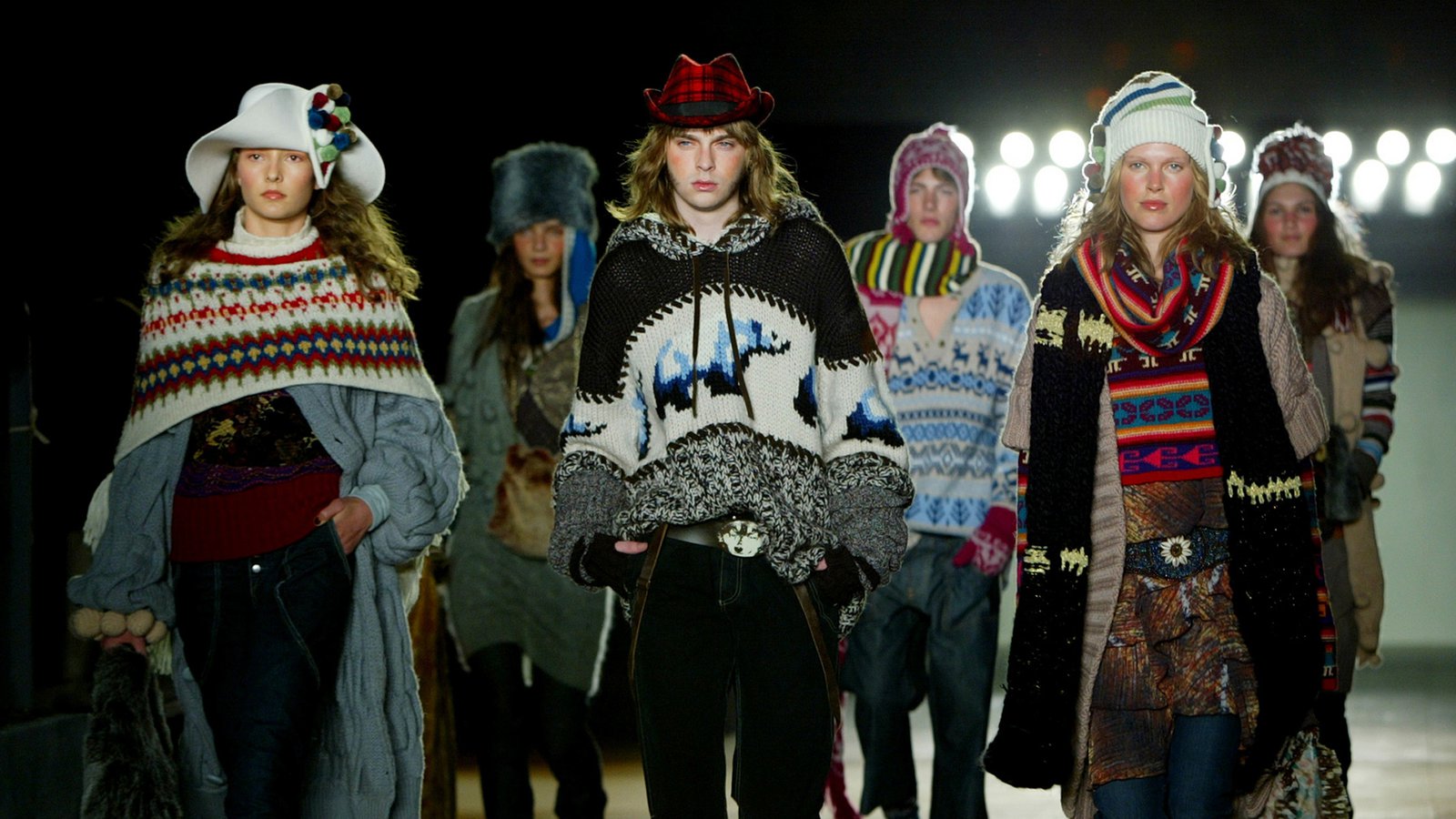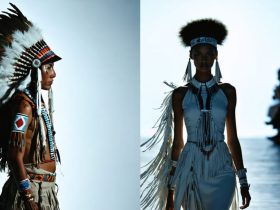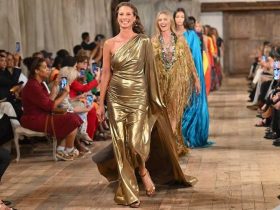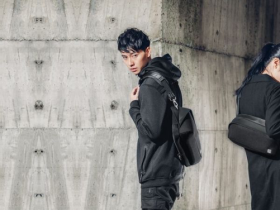In recent years, the fashion industry has experienced a notable shift towards a more inclusive and conscious approach, marked by the rise of cultural appreciation. As designers and brands increasingly recognize the value and richness of diverse cultural traditions, they are weaving these influences into thier creations with greater sensitivity and respect. This movement goes beyond mere trends; it reflects a growing awareness of the importance of honoring the origins of the styles and motifs that inspire contemporary fashion.
In this article, we will explore the factors fueling this conversion, the benefits of cultural appreciation, and the challenges that still lie ahead for a truly equitable and respectful fashion landscape. Join us as we delve into how the fashion world is embracing diversity, fostering creativity, and paving the way for a more inclusive future.
Exploring the Foundations of Cultural Appreciation in Fashion

In recent years,fashion has increasingly become a canvas for expressing cultural narratives,showcasing the rich tapestry of global traditions and artistic styles. This shift towards cultural appreciation in the fashion industry has sparked a deeper understanding of the importance of context and authenticity. Brands are now recognizing the value of collaboration with local artisans, enabling them to share their stories and heritage through clothing. this authentic approach promotes lasting practices and supports communities, allowing consumers to engage in a meaningful way with the pieces they wear.
Understanding the foundations of cultural appreciation means acknowledging the nuances of various traditions. Its vital for designers to educate themselves about the stories behind the fabrics, patterns, and techniques they incorporate into their collections. Here are some key elements to consider:
- Research: Delve into the history of cultural elements to understand their meaning.
- Engagement: Collaborate with cultural representatives to ensure respectful representation.
- Sustainability: Focus on ethical sourcing and production that benefits local communities.
By embracing these principles, the fashion industry can move towards a more inclusive and respectful model that celebrates diversity rather than appropriating it.
Celebrating Diversity: How Designers are Incorporating Global Influences
The fashion industry is increasingly becoming a tapestry woven from diverse cultural threads, with designers actively seeking inspiration from various global influences. This shift toward cultural appreciation is not merely a fleeting trend; it reflects a deeper understanding that fashion is a universal language. By embracing elements from different countries,designers are creating collections that celebrate individuality and multiculturalism.From intricate embroidery techniques of South Asia to the bold colors of African textiles, the incorporation of global motifs has transformed runways into celebrated marketplaces of ideas and artistry.
Moreover, brands and designers are now more conscientious about their sourcing and storytelling, ensuring that they honor the origins of the techniques and styles they draw from. This practise has led to a perceptible shift in consumer expectations, as shoppers are becoming increasingly aware and appreciative of cultural contexts. Key influences now often include:
- traditional Japanese craftsmanship, such as Sashiko stitching
- andean textile patterns from South america
- middle Eastern geometric designs
To further illustrate this trend, here’s a simple comparison showcasing how various designers have integrated global aesthetics into their work:
| Designer | Influence | Signature Element |
|---|---|---|
| Isabel Marant | Bohemian French style with African prints | Vibrant, layered looks |
| Roksanda Ilincic | Eastern european folk art | Bold color blocking |
| Ozwald Boateng | Ghanaian heritage | Tailored suits with kente cloth |
Navigating Challenges: The Fine Line Between Appreciation and Appropriation
In the dynamic landscape of the fashion industry, the line between cultural appreciation and appropriation can often appear blurred.As many designers draw inspiration from diverse cultures, it is essential to recognize the underlying significance of the elements being incorporated. Understanding the context and history of these cultural symbols is crucial. The fashion community must approach cultural motifs with sensitivity and respect, ensuring that the stories and traditions behind them are honored rather than exploited.This journey requires not only creativity but also a commitment to authentic collaboration with cultural representatives.
To foster a genuine appreciation, brands can adopt various strategies that promote ethical practices while celebrating diverse heritages. Here are some key considerations:
- Collaboration with Cultural Artists: Partnering with local artisans ensures authenticity and provides a platform for their voices.
- Education and Awareness: Incorporating educational resources about the cultural significance of designs can enhance consumer understanding.
- Transparent Sourcing: Clearly communicating how materials and designs are sourced helps build trust and respect.
By embracing these practices, the fashion industry can create a space were cultural appreciation thrives while minimizing the risks of appropriation. This delicate balance is essential for a more inclusive and enriched fashion narrative.
Building a Responsible Fashion Future: Recommendations for Industry Stakeholders
To foster a future where fashion thrives on cultural appreciation rather than appropriation, stakeholders must take proactive steps. Brands should prioritize education by investing in training programs that focus on the history and significance of the cultures they draw inspiration from.This will not only enlighten designers and marketers but also help avoid misrepresentations. furthermore, collaborations with artisans and designers from the cultures being represented can enhance authenticity and create a platform for marginalized voices. such partnerships can lead to a richer narrative that respects cultural origins while fostering creativity.
In addition, openness and sustainability must become core tenets in the fashion industry. Retailers should consider implementing clear sourcing policies, ensuring that materials are ethically sourced and produced. A commitment to community engagement is essential; fashion companies can organize workshops and cultural events that celebrate diversity while fostering an inclusive habitat. Here’s a simple overview of key recommendations for stakeholders:
| Recommendation | Description |
|---|---|
| Educate Teams | Invest in training focused on cultural significance and sensitivity. |
| Collaborate with Locals | Partner with artisans to authentically represent cultures. |
| Promote Transparency | Ensure ethical sourcing and production practices. |
| Engage Communities | Organize events that celebrate and educate about diverse cultures. |
Wrapping Up
the rise of cultural appreciation in the fashion industry marks a notable shift towards inclusivity and respect for diverse traditions and aesthetics. As designers, brands, and consumers become more aware of the importance of honoring cultural heritage, we can look forward to a future where fashion not only celebrates individual expression but also acknowledges the rich tapestries of stories that inspire it. By fostering open dialogue and collaboration, the industry can move beyond appropriation to a place of genuine appreciation and respect. As we continue to engage with fashion,let us embrace this journey together,championing creativity that uplifts voices and honors the heritage behind every thread. With mindful choices and a commitment to understanding, we can all play a role in shaping a vibrant, culturally rich fashion landscape that reflects the beauty of our shared humanity. Thank you for exploring this vital conversation with us!










Leave a Reply